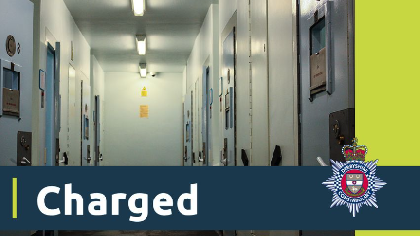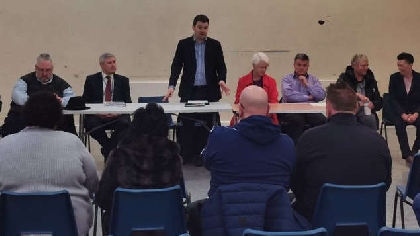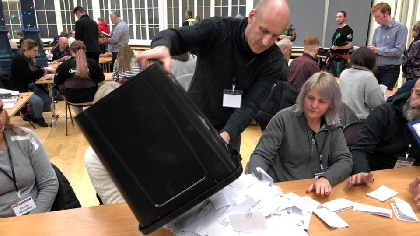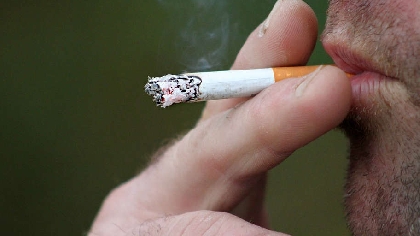
Schools are the main places in which Derbyshire residents are currently reporting Covid-19 cases and low vaccine uptake is focused in our already more vulnerable communities.
Dean Wallace, the public health director for Derbyshire, also warned that there may be increased pressure on our NHS over the next few weeks due to more people mixing at Christmas.
In an update for the Local Democracy Reporting Service, Mr Wallace outlined that everyone needs to make responsible choices around meeting up with people from outside their households.
This includes keeping a distance – where possible – wearing a face covering in enclosed spaces, retaining good hand hygiene and making sure indoor spaces outside of your household are well-ventilated.
All of this comes as Derbyshire continues to record thousands of new Covid cases every week, critically meaning there is more of a risk that vulnerable people will contract the virus – even if they have been vaccinated.
There is also the new Omicron variant of the virus, with health officials fearing its vastly unknown potential.
This is why health leaders continue to push for people to get vaccinated in order to protect other people – as well as themselves – including their colleagues or those they come into contact with on their commute or while shopping.
Mr Wallace said: “Presently the main setting where we are seeing more cases being reported are schools/educational settings.
“We see lower vaccine uptake in certain communities and this often has a strong relationship to wider socio-economic factors, linked to housing and employment type.
“In these communities we also see high rates of other long-term health conditions – that would further increase individual and community risk from Covid-19.
He said the highest case rates were among younger age groups – those aged under 18 – but there has been a recent uptick in cases among the 30-44 year-old age group.
Mr Wallace believes this may point to school children becoming infected and passing it on to their parents or carers.
When asked what we can expect over the next few weeks, Mr Wallace said: “I would imagine a pretty similar picture to what we are seeing now with case rates remaining steady at a relatively high level, with some potential increase in infection rates as people undertake more social mixing in the run-up to Christmas.
“The NHS and social care will remain under significant pressure, Covid will be additional pressure on top of this, as the NHS and social care face usual winter pressures, a backlog of health and care need from the pandemic, plus the direct impact of Covid.”
While Covid hospital inpatient levels remain comparatively low, the very presence of the virus among inpatients, in the middle of a group who are already very vulnerable, heavily restricts operations and capacity.
Any pressure on operations and capacity inevitably has an impact on the rest of the patients in our hospitals and on those who are coming to healthcare facilities in need of help – causing longer waits for care.
During previous periods of high Covid case rates, lockdown measures have been imposed and healthcare organisations told to heavily reduce their services – but that has not happened this time.
Our healthcare services are handling much higher levels of patients than they would typically see, while trying to wade through the waiting list backlog, care for Covid patients and while there is an increasing level of staff illness and burnout.
When asked how this Christmas period may differ from last year, Mr Wallace said: “The restrictions we saw last year will not be in place, we will still be in the midst of a pandemic with the Omicron variant emerging and with a health and social care system under pressure.
“Individuals will need to consider their own risk and make choices they feel comfortable with.
“There are things we can do to reduce our risk and the risk to the people we care about and this includes: Wearing a face covering in enclosed public spaces; when meeting people outside your household indoors ensuring that the indoor space is well ventilated; and keeping a distance from people outside your household if possible and following good hand hygiene practices.
“Taking a lateral flow test when you are going to be in close contact with people outside your household helps reduce the risk to yourself and others.
“Getting a PCR test if you have symptoms and self-isolating until you get the results, if the result is positive then you must self-isolate for the full 10 days.
“The vaccine remains our key defence against Covid-19 and while it’s important that people take up their first and second doses followed by their boosters these practical hygiene measures play a major part in supporting the roll-out of the vaccination programme.”
Read more from the Glossop Chronicle
Click here for more of the latest news
Click here to read the latest edition of the paper online
Click here to find out where you can pick up a copy of the paper


 Man charged with four thefts from shops in Glossop
Man charged with four thefts from shops in Glossop
 Community group aims to take over running of axe-threatened Gamesley Community and Youth Centre
Community group aims to take over running of axe-threatened Gamesley Community and Youth Centre
 East Mids Mayoral candidates outline their hopes on the election campaign trail
East Mids Mayoral candidates outline their hopes on the election campaign trail
 Derbyshire council gets £5m Government funding boost in battle to stub out smoking
Derbyshire council gets £5m Government funding boost in battle to stub out smoking

